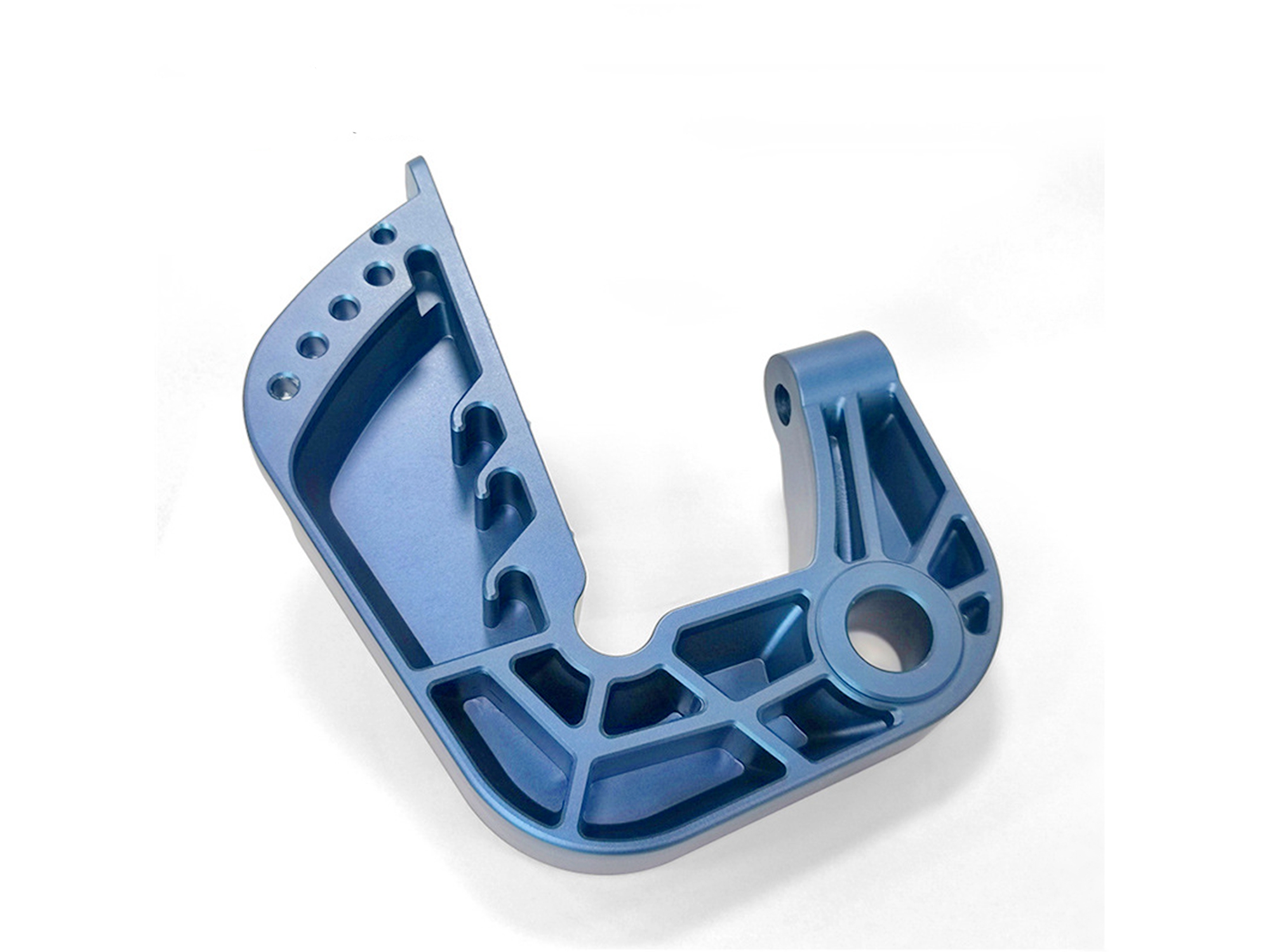Aluminum 7075 CNC Machining for Lightweight Robotics Structural Components
Introduction
In the rapidly evolving field of robotics, lightweight yet robust structural components are essential to achieving agility, efficiency, and reliability. Robotics engineers constantly seek materials that deliver an optimal balance of strength, weight reduction, machinability, and corrosion resistance. Aluminum 7075, an aerospace-grade alloy, has become a premier choice in advanced robotics due to its unique mechanical properties. This comprehensive guide explores our precision CNC machining processes tailored specifically for Aluminum 7075, highlighting its suitability for creating state-of-the-art robotic structures.
Aluminum 7075 Overview
Aluminum 7075 is an aerospace-grade alloy renowned for its exceptional mechanical properties, primarily due to its zinc, magnesium, and copper content. These elements give Aluminum 7075 an outstanding strength-to-weight ratio, making it one of the strongest aluminum alloys available. Its mechanical strength rivals some steel grades while remaining significantly lighter, an essential attribute for high-performance robotics.
Key Material Properties:
Exceptional Strength-to-Weight Ratio: Ideal for applications requiring robust but lightweight materials.
Excellent Machinability: Facilitates precision manufacturing of intricate and complex shapes.
High Fatigue Resistance: Ensures prolonged reliability and structural integrity in demanding environments.
Superior Corrosion Resistance: Especially effective after advanced surface treatments, reducing maintenance and extending the component lifespan.
These characteristics make Aluminum 7075 highly suitable for essential robotics components such as frames, arms, joints, and precision mounts, which demand a combination of strength, precision, and lightweight properties.
CNC Machining Processes for Aluminum 7075
CNC Milling
CNC milling is integral to machining Aluminum 7075. This process uses advanced computer-controlled machines that precisely remove material, shaping the raw alloy into complex structural forms essential for robotics applications. CNC milling provides unmatched accuracy, consistency, and flexibility, making it possible to achieve intricate designs crucial for robotic arms, joints, and other structural components.
CNC Turning
CNC turning complements milling by enabling the manufacturing of cylindrical and symmetrical parts. This technique uses high-speed rotations to shape Aluminum 7075 into precise, rounded structures such as motor housings, robotic joints, and bearing components. The accuracy of CNC turning ensures tight tolerances and excellent surface finishes.
Multi-Axis Machining
Multi-axis machining significantly expands capabilities beyond conventional machining methods for intricate robotic parts. Multi-axis CNC machining allows movement along multiple axes simultaneously, enabling the production of highly complex components that would otherwise be difficult or impossible to achieve with traditional machining. This technique is essential for intricate robotic parts that require detailed geometric features or complex angular relationships.
Precision Drilling
Precision drilling is vital in assembling robotic systems, where exact hole placement is crucial. CNC drilling ensures precise and repeatable holes in Aluminum 7075 components, facilitating seamless integration of mechanical and electrical elements in robotic systems. This accuracy is particularly critical in robotics, where alignment and precision directly influence performance.
Surface Treatments for Enhanced Performance
Surface treatments significantly enhance Aluminum 7075 components by improving corrosion resistance, durability, and aesthetics. Key surface treatments include:
Anodizing: Anodizing enhances the oxide layer on Aluminum 7075, significantly boosting corrosion and wear resistance while providing a suitable base for coloring.
Powder Coating: Powder coating offers additional protection against corrosion and abrasion, paired with superior aesthetic appeal, making robotic structures visually attractive and resilient.
Electroless Nickel Plating: A uniform coating significantly increases wear resistance and improves corrosion protection.
Alodine Coating: Alodine coating increases Aluminum 7075's corrosion resistance and enhances adhesion for paints and adhesives, which is essential in many robotic components.
Robotics Industry Applications
Our CNC machined Aluminum 7075 components are specifically engineered for various advanced robotics applications, including:
Robotic Arms and Manipulators
Aluminum 7075's strength-to-weight ratio ensures robotic arms can achieve optimal efficiency and precision. The lighter weight reduces power requirements, prolongs battery life, and enables faster, more agile movements critical in automation and manufacturing applications.
Mobile Robotics Frames
For mobile robots, structural integrity is critical. Aluminum 7075 provides the necessary durability to withstand dynamic stresses while maintaining minimal weight, facilitating agility, longer operating durations, and improved maneuverability.
Humanoid Robotics
Robots mimicking human anatomy require materials that deliver superior performance without excess weight. Aluminum 7075 allows humanoid robots to maintain structural integrity while optimizing mobility, balance, and agility.
Industrial Automation
In industrial settings, CNC-machined Aluminum 7075 components deliver consistent performance under rigorous conditions. They withstand high loads and stresses, maintaining precision and reliability even in harsh operational environments.
Advantages and Limitations
Advantages:
Strength-to-weight Ratio: Superior performance ideal for high-performance robotics.
Machinability: Enables complex designs and tight manufacturing tolerances.
Fatigue Resistance: Ensures long-term reliability and durability.
Corrosion Resistance: Enhanced significantly through proper surface treatments, extending component life.
Limitations:
Potential for galvanic corrosion if combined incorrectly with dissimilar metals.
Requires specialized machining knowledge and equipment.
Higher cost compared to some conventional aluminum alloys.
However, the advantages provided by Aluminum 7075 significantly outweigh these challenges, particularly in critical and high-performance robotic applications.
Future of Aluminum 7075 in Robotics
With ongoing advancements in robotic technologies, the demand for precise, durable, lightweight components continues to rise. Aluminum 7075 remains a forefront material, empowering robotics designers and manufacturers to push the boundaries of innovation. Its high performance and precision CNC machining capabilities position Aluminum 7075 at the forefront of modern robotics manufacturing.
FAQs
Why is Aluminum 7075 chosen for lightweight robotics structures?
What CNC machining processes yield the best results with Aluminum 7075?
What surface treatments are recommended for Aluminum 7075 robotics components?
How do the machining properties of Aluminum 7075 affect production costs?
What precautions are necessary when machining Aluminum 7075 for robotics applications?

